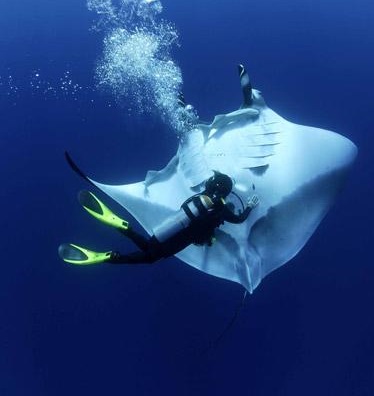Joint effort ends delay counting Manta rays
 Manta rays are immense, smooth, dark, intimidating and certainly difficult to miss, but scientists in Queensland are concerned about the future of the world’s largest ray.
Manta rays are immense, smooth, dark, intimidating and certainly difficult to miss, but scientists in Queensland are concerned about the future of the world’s largest ray.
Researcher Dr Kathy Townsend says the big, non-threatening ocean-gliders are extremely important: “Manta rays can be considered the canaries in the coal mine in relation to the marine environment in which they live... Manta rays have recently been listed as vulnerable to extinction... because of the unsustainable, unregulated fisheries in Indonesia, Sri Lanka, Mexico and Africa.”
Expanding its ‘Project Manta’ effort to get a solid grasp of just how many rays are out there, The University of Queensland has joined forces with scientists from Western Australia's Murdoch University and industry partners Austral Fisheries and the TG Kailis Marine Conservation Fund – embarking in collaboration on “Project Manta – WA”.
“The support of Austral Fisheries and the TG Kailis Marine Conservation Fund will allow the two largest manta ray research projects in Australia to join forces, enabling one of the most comprehensive studies of the biology and ecology of manta rays in the world,” said Mr David Carter, CEO of Austral Fisheries.
The now nationwide project is calling on divers and snorkellers around the country to get involved in creating a visual database to identify manta rays.
“We specifically want pictures of the underbelly of the manta ray because they can be used to identify individuals... the black and white patterns are as unique as a fingerprint,” Dr Townsend said.
Project Manta is calling for all citizen scientists to submit photos via its ‘Project Manta' community page on Facebook or by email to project.manta@uq.edu.au








 Print
Print